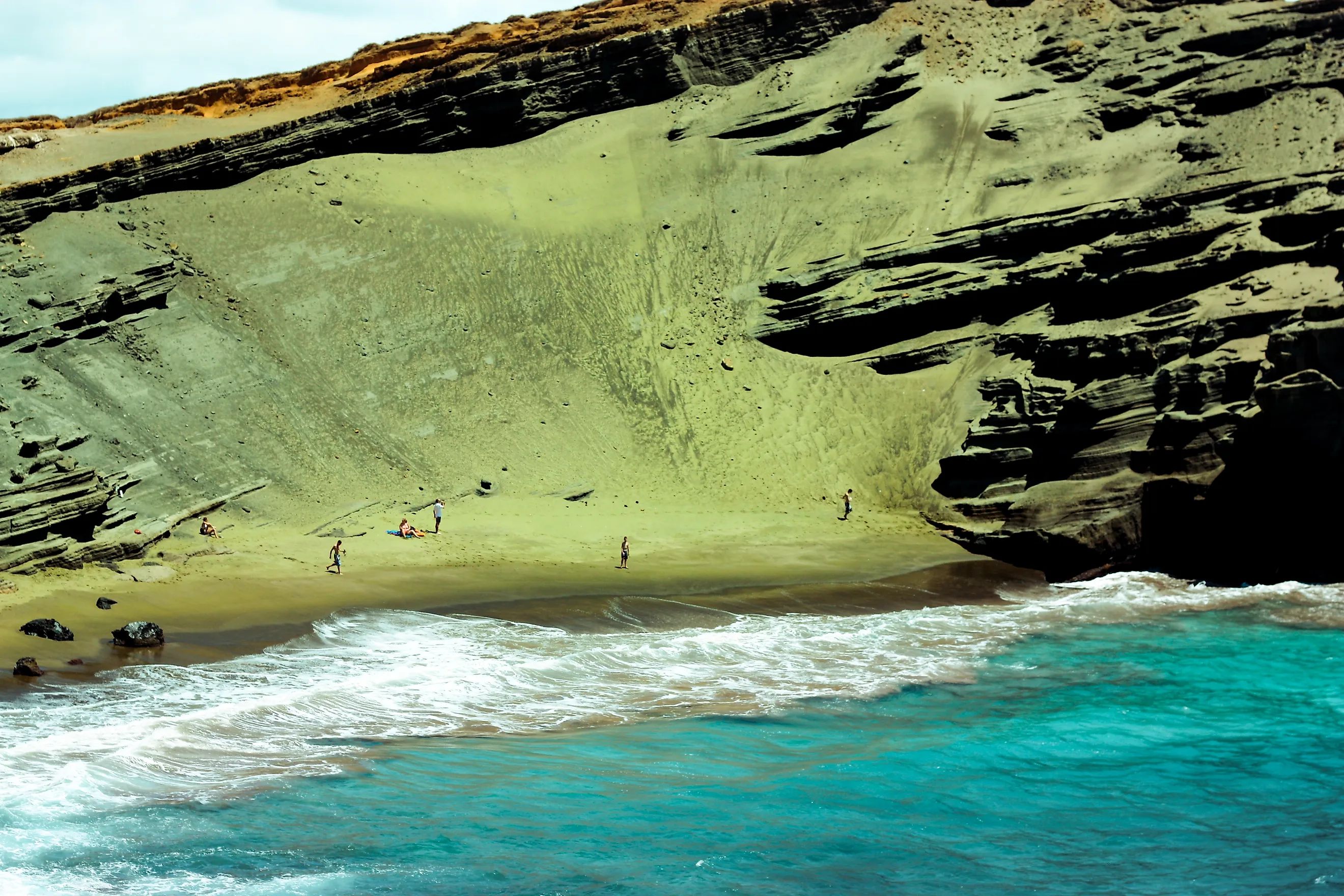
6 Of The Most Bizarre Landmarks In Hawaii
Hawaii is best known for its beaches, volcanoes, and verdant landscapes, but scattered across this chain of islands are a collection of landmarks that defy expectations. Some are natural formations shaped by volcanic activity, while others are human-made sites with unusual histories or appearances. Together, they create a collection of destinations that stand apart from the familiar postcard views. From stone forests left behind by lava to seemingly out-of-place temples, the bizarre landmarks we will highlight below show off a side of Hawaii that typical tourists don't always see.
Spitting Cave
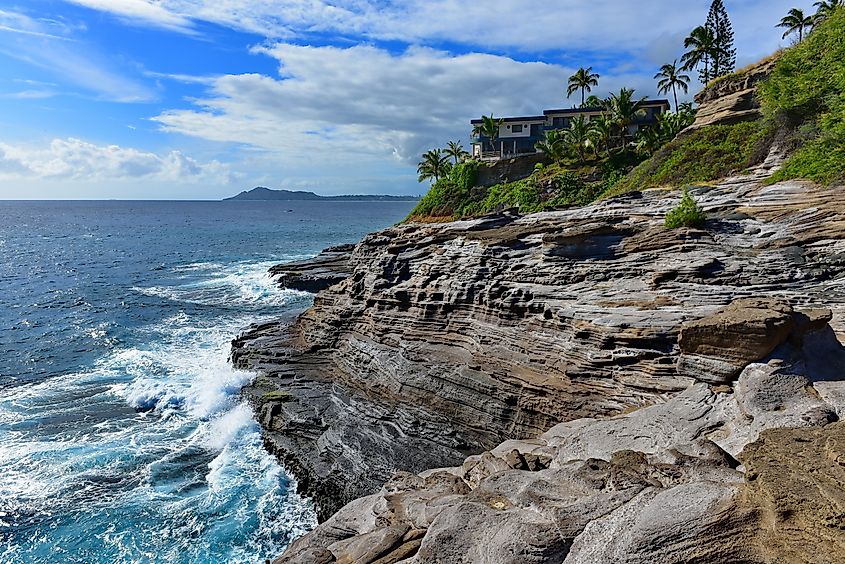
Located along the cliffs of Portlock on Oʻahu, the Spitting Cave is definitely one of Hawaii’s most unusual natural landmarks. Waves forcefully rush into a narrow sea cave and then shoot back out with explosive sprays, giving the appearance of the cliff “spitting” water back into the ocean. The phenomenon is eye-catching and unpredictable, with surges that can launch water particularly high if you stay to watch long enough.
The cave is accessible via a residential neighborhood in the east end of Honolulu, requiring a short but steep walk to the coastline down a footpath. Note that the site has a reputation for danger, both from the power of the ocean and the popularity of cliff jumping in the area, with some jumps starting from up to 70 feet above the water! Several accidents and drownings have occurred here, so appreciate this spot at your own risk.
Puʻuhonua o Hōnaunau’s Great Wall
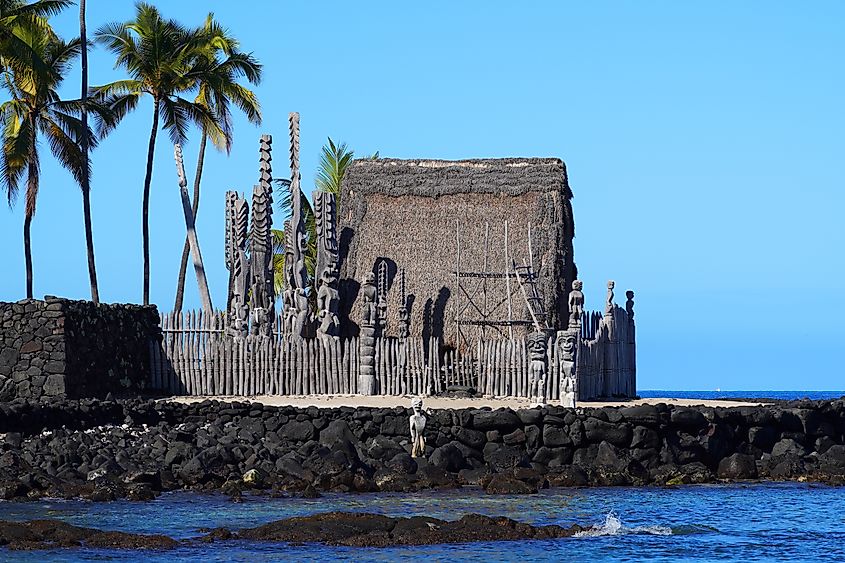
On the Big Island, Puʻuhonua o Hōnaunau National Historical Park contains a landmark unlike anything else in Hawaii: The Great Wall. Not the one you may be thinking of across the ocean in China, this 965-foot-long and up to 12-foot-high lava rock barrier was constructed centuries ago to mark the boundary of a sacred refuge. In traditional Hawaiian society, those who violated "kapu," or holy laws, could escape death by reaching this sanctuary. Once inside, they were protected by priests and absolved of wrongdoing. It was also a place where disgraced warriors could find absolution.
The wall is truly massive and an engineering marvel, with tightly fitted stones that have stood for hundreds of years without mortar. While it once served a profound cultural and spiritual purpose, its size and endurance now make it a strikingly bizarre sight in a landscape otherwise defined by open lava fields and coastal palms. These days, you can walk alongside the aptly named Great Wall, imagining the lives it once saved and the ancient events that must have occurred in and around it.
Papakōlea Green Sand Beach
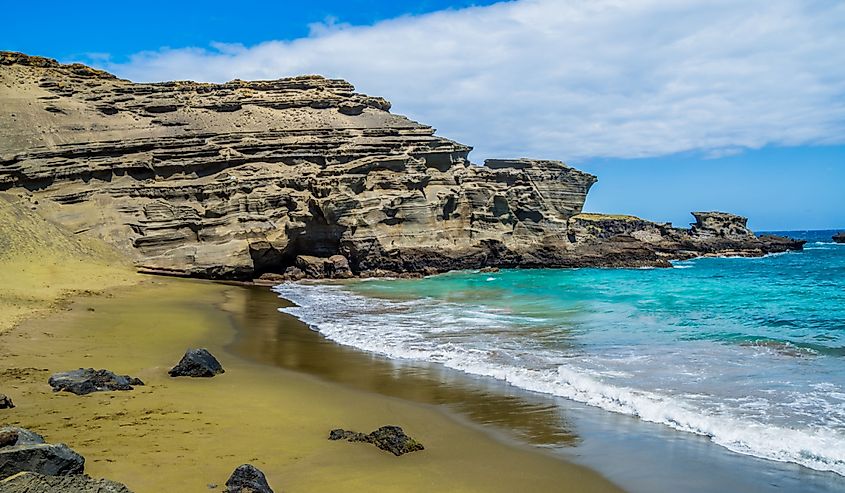
Papakōlea, located near South Point Park (the southernmost point in the United States) on the Big Island, is one of only a handful of green sand beaches worldwide. Its distinctive color comes from olivine crystals, a mineral found in the volcanic cone of Puʻu Mahana, which erupted into the ocean an estimated 50,000 years ago. Wave action has eroded the cone, concentrating the green crystals along the shoreline and giving the sand an unusual appearance.
The beach can only be reached by a 2.5-mile, one-way hike across windswept lava fields, or for a faster trip, via a local shuttle service. While the waters here are rough and not ideal for casual swimming, the incredibly green shoreline, framed by the towering nearby cliffs, makes it a remarkable and somewhat remote sight that not everyone knows.
Molokini Crater
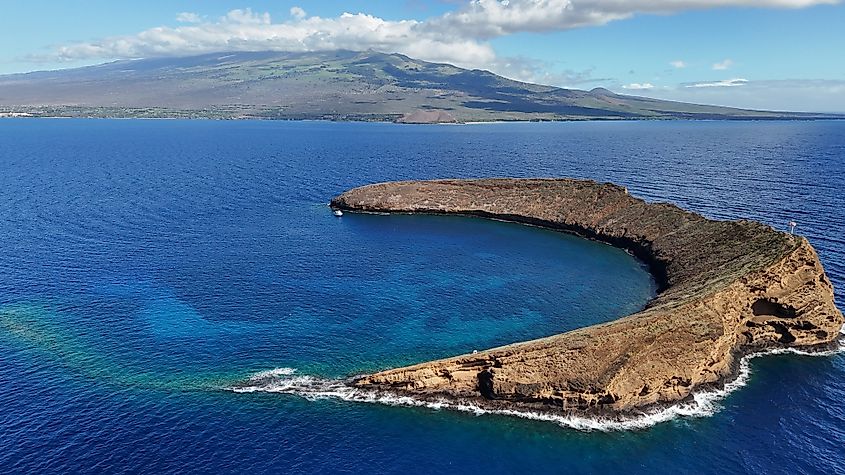
The Molokini Crater, located a little under three miles off Maui’s southwestern coast, is a partially submerged volcanic caldera shaped like a crescent. Formed about 230,000 years ago, it rises sharply from the ocean floor, with sheer cliffs above the surface and a sheltered interior lagoon, a popular hangout spot for boaters and swimmers.
The unusual shape also creates a natural marine sanctuary, protecting over 250 species of tropical fish and corals. This crater’s form stands out from above, forming an almost perfect arc of volcanic rock circling in the ocean's calm, intensely blue waters.
Beyond its ecological and recreational significance, Molokini has a cultural and military history. Native Hawaiian legends describe it as a mythological destination (it is the site of several folktales), while during World War II, the U.S. military used it as a bombing range.
Today, it is uninhabited but frequently visited by snorkelers and divers who experience its odd geology and relatively shielded and vibrant underwater ecosystem.
Lava Tree State Monument
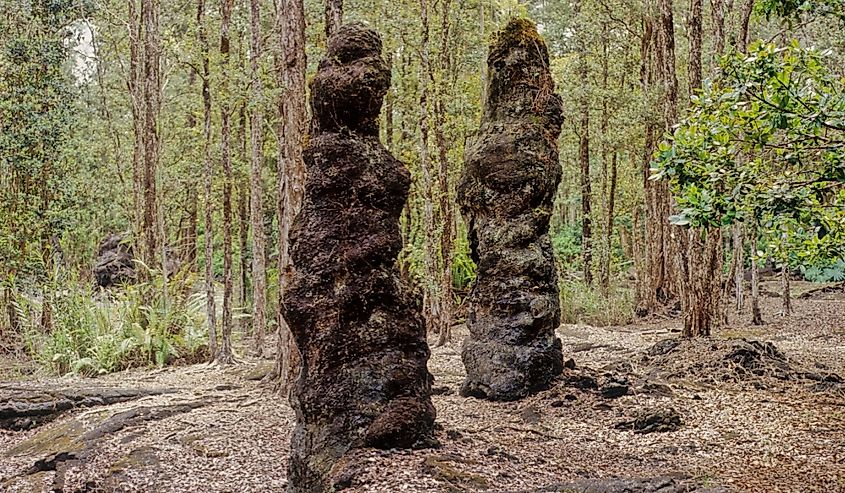
Lava Tree State Monument in the Puna district can only be described as bizarre. It boasts several tree-shaped lava formations throughout its 17 acres, and a walking trail leads past the twisted figures. Unlike typical lava fields that destroy everything in their path, Lava Tree State Monument presents a unique, frozen record of a forest caught in an eruption.
In 1790, a massive lava flow swept through the area, coating living trees with molten rock. As the lava cooled around the trunks, the trees eventually burned away, leaving behind hollow stone pillars in their exact shapes! Today, dozens of these eerie formations still stand, some towering over 10 feet tall. Besides the science behind it, this destination's weirdness comes from the fact that they appear to have been intentionally placed on the forest floor, like a statue garden. As you now know, they were, in fact, crafted by Mother Nature instead, but the mysterious vibe of the place still seems to stay intact.
Byodo-In Temple
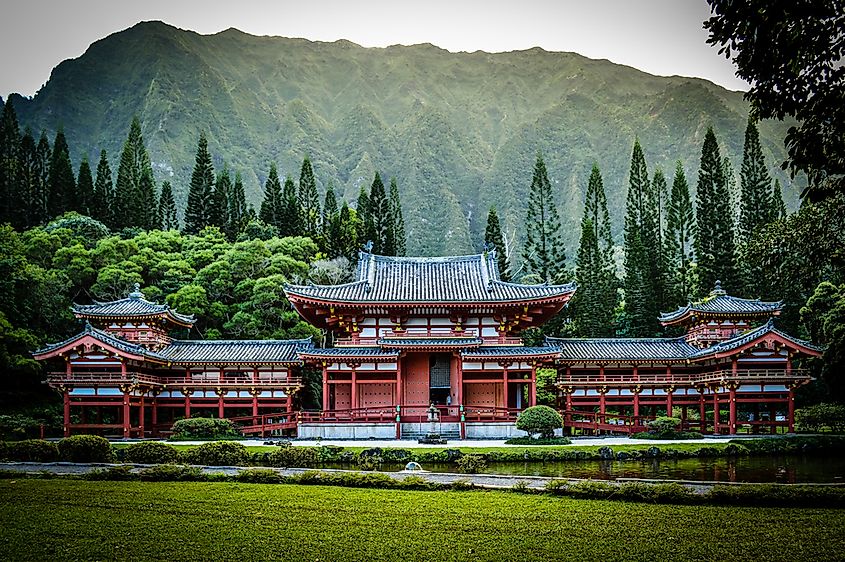
Set against the Koʻolau Mountains in the Valley of the Temples Memorial Park, the Byodo-In Temple seems to have been taken straight out of Japan and dropped in the lush jungles of Hawaii. In reality, it was built in 1968 to commemorate the centennial of Japanese immigration to the islands. It consists of a full-scale replica of the 950-year-old Byodo-In Temple in Uji, Japan.
Its ornate wooden architecture, beautifully curving rooflines, and a massive bronze Buddha statue housed inside make it a must-visit for architectural enthusiasts. Moreover, the surrounding grounds of the temple feature koi ponds, waterfalls, and even some wandering peacocks, creating an exceptionally peaceful and serene atmosphere. Although it is not a functioning Buddhist temple, it serves as a non-denominational place of meditation and reflection, perhaps the most scenic of such places you will ever visit!
These bizarre landmarks in Hawaii highlight the islands’ ability to entertain beyond their natural beauty (although many of these odd places are indeed naturally formed). Each site, whether a lava-formed oddity, a centuries-old native remnant, or an unexpected cultural transplant, reflects the natural and human forces that have shaped these Pacific islands. Visiting these unusual sites not only offers a deeper look into the region's past and present, but they will also give you a few new memories that certainly not everyone can say they share.











